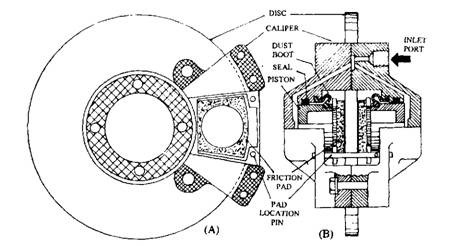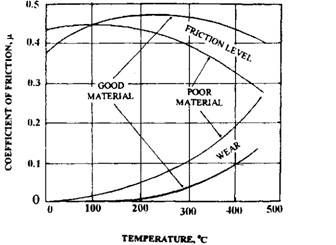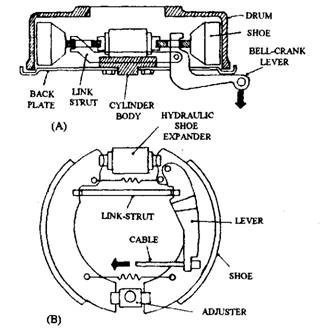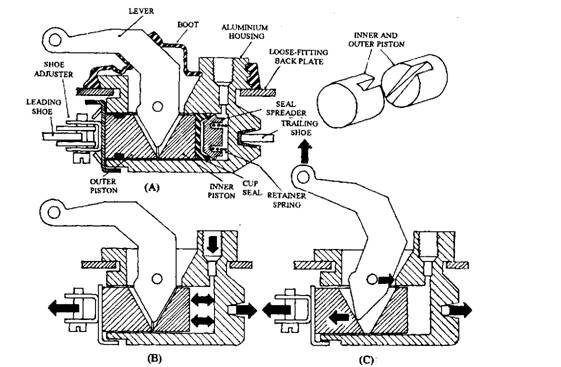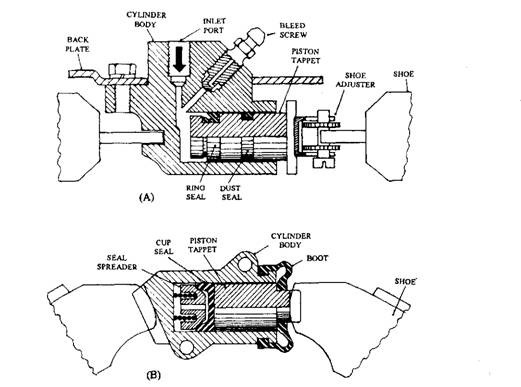disc brake caliper
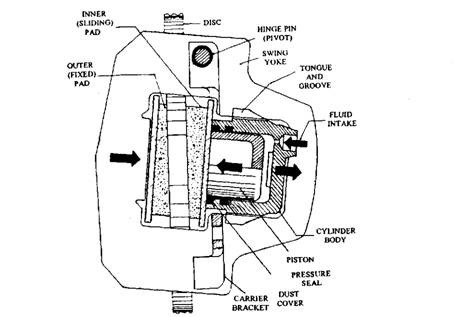
Disc Brake Pad Support Arrangements Swing Yoke Type Brake Caliper This disc brake caliper is a single cylinder unit and is of light weight. The caliper unit uses a rigid yoke of steel pressing, a cylinder assembly, two pads and a carrier bracket bolted to the suspension hub carrier. A tongue and groove joint rigidly secure the cylinder to one side of the yoke frame while the yoke itself pivots at one end on it supporting carrier bracket. The disc is mounted on the transmission drive shaft hub which it is mounted provides the drive to the disc. The lining pads are supported on either side of the disc in the yoke frame (Fig. 28.28). Fig. 28.28. Swing yoke type brake caliper During operation of the foot brake, hydraulic pressure pushes the piston and inboard pad against their adjacent disc face. At the same time, the hydraulic reaction moves the cylinder in the opposite direction so that the outboard pad and cylinder body are bridged. Then the yoke pivots, forcing the outboard pad against
